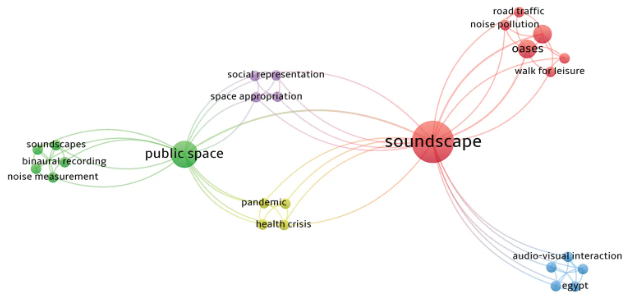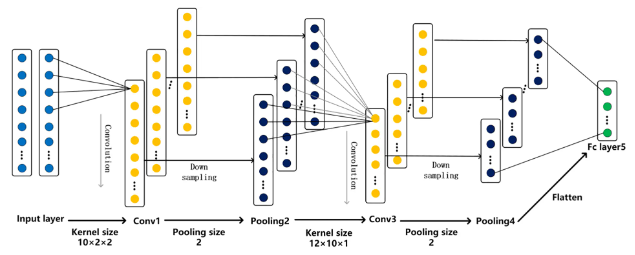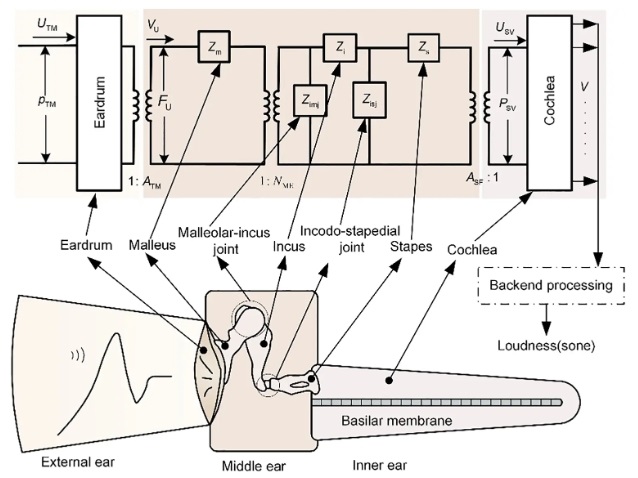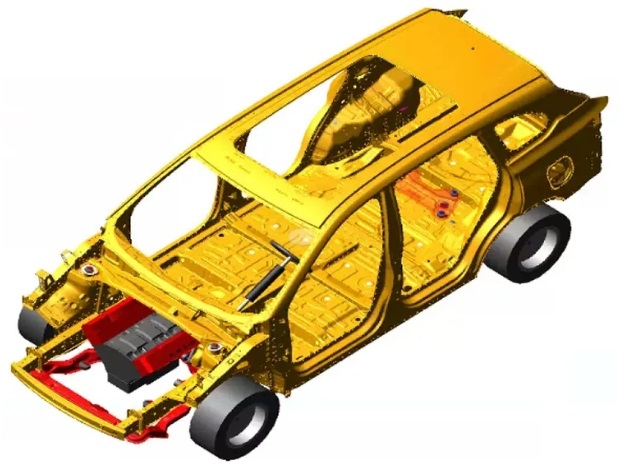Noise suppression of high-speed cavity treated with leading and trailing edge spoilers
Abstract
High-speed cavity flow and the induced noise have been continuously investigated in the aerospace industry. They may not only influence the performance of instruments inside the cavity, but also cause fatigue damage to the structures, which threaten the safety of aircraft. Therefore, cavity noise suppression is practically important. In this work, the leading edge sawtooth, the leading edge cylinder, and the trailing edge contouring are employed to suppress high-speed cavity noise at Mach numbers of 2.0, 2.5, 3.0, 3.5, and 4.0. Wind tunnel tests were performed to study the influence of the control parameters associated with these suppression methods. The results show that the leading edge sawtooth and cylinder are able to effectively suppress cavity noise at Ma = 2.0, 2.5, but prove ineffective at Ma = 3.0, 3.5, and 4.0, suggesting that the critical Mach number locates between 2.5 and 3.0. Above the critical Mach number, cavity noise would increase. In comparison, the noise suppression effect of the trailing edge contouring is relatively minor, and it shows a monotone decreasing trend as Mach number increases from 2.0 to 4.0.
References
[1]Shaw L, Clark R, Talmadge D. F-111 generic weapons bay acoustic environment. Journal of Aircraft, 1988, 25(2): 147–153.
[2]Zhao K, Okolo P, Neri E, et al. Noise reduction technologies for aircraft landing gear-A bibliographic review. Pergamon, 2020.
[3]Flaherty W, Reedy T, Elliott G S, et al. Investigation of cavity flow using fast-response pressure-sensitive paint. AIAA Journal, 2014, 52 (11): 2462–2470.
[4]Shaaban M, Mohany A. Passive control of flow-excited acoustic resonance in rectangular cavities using upstream mounted blocks. Experiments in Fluids, 2015, 56: 1–12.
[5]Stanek M, Raman G, Ross J, et al. High frequency acoustic suppression-the role of mass flow & the notion of superposition. AIAA Aeroacoustics Conference. 2002: 2404.
[6]Schmit R, Semmelmayer F, Haverkamp M, et al. Analysis of cavity passive flow control using high speed shadowgraph images. AIAA Aerospace Sciences Meeting Including the New Horizons Forum and Aerospace Exposition. 2012: 738.
[7]Schmit R, Semmelmayer F, Haverkamp M, et al. Examining passive flow control devices with high speed shadowgraph images around a Mach1. 5 cavity flow field. AIAA Flow Control Conference. 2012: 3139.
[8]Thangamani V, Knowles K, Saddington A J. Effects of scaling on high subsonic cavity flow oscillations and control. Journal of Aircraft, 2014, 51 (2): 424–433.
[9]Saddington A J, Knowles K, Thangamani V. Scale effects on the performance of sawtooth spoilers in transonic rectangular cavity flow. Experiments in Fluids, 2016, 57: 1–12.
[10]Panickar P, Raman G. Understanding the mechanism of cavity resonance suppression using a cylindrical rod in crossflow. AIAA Aerospace Sciences Meeting and Exhibit. 2008: 54.
[11]Dudley J, Ukeiley L. Suppression of fluctuating surface pressures in a supersonic cavity flow. Flow Control Conference. 2010: 4974.
[12]Dudley J G, Ukeiley L. Passively controlled supersonic cavity flow using a spanwise cylinder. Experiments in Fluids, 2014, 55: 1–22.
[13]Dangguo Y, Jifei W. Investigation on suppression effect of zero-net-mass-flux jet on aerodynamic noise inside open cavities. Acta Aeronautica Et Astronautica Sinica, 2011, 32(6): 1007–1014.
[14]Ananthan V B, Akkermans R A D, Hu T, et al. Effect of porous material on trailing edge sound sources of a lifting airfoil by zonal Overset-LES. Journal of Sound and Vibration, 2020, 480 (10): 115386.
[15]Ananthan V B, Akkermans R A D, Hu T, et al. Trailing-edge noise reduction potential of a locally applied shallow dimpled surface. Journal of Sound and Vibration, 2022, 525: 116745.
[16]Ananthan V B, Akkermans R A D, Hu T, et al. Effects of localized application of porous material on trailing-edge noise of a circulation-controlled wing. International Journal of Heat and Fluid Flow, 2023, 103: 109209.
[17]Ananthan V B, Akkermans R A D, Hu T, et al. Trailing edge noise reduction using bio-inspired finlets. Journal of Sound and Vibration, 2023, 549: 117553.
[18]Kähler H H, Bliss D B. Aerodynamically induced pressure oscillations in cavities-physical mechanisms and suppression concepts. 1975.
[19]Plumblee H E, Gibson J S, Lassiter L W. A theoretical and experimental investigation of the acoustic response of cavities in an aerodynamic flow. 1962.
[20]Hankey W L, Shang J S. Analyses of pressure oscillations in an open cavity. AIAA Journal, 2012, 18 (8): 892–898.
[21]Sun X H, Zhang P J Y, Zhao K, et al. Effects of Mach number on space-time characteristics of wall pressure fluctuations beneath turbulent boundary layers. Physics of Fluids, 2024, 36(9).
[22]Yu M, Dong S W, Liu P X, et al. Post-shock turbulence recovery in oblique-shock/turbulent boundary layer interaction flows. Journal of Fluid Mechanics, 2023, 961: A26.
[23]Abdelmwgoud M, Shaaban M, Mohany A. Shear layer synchronization of aerodynamically isolated opposite cavities due to acoustic resonance excitation. Physics of Fluids, 2021, 33(5).
[24]Karthick S K. Shock and shear layer interactions in a confined supersonic cavity flow. Physics of Fluids, 2021, 33(6).
[25]Sah R, Ghosh S. Numerical Investigation of Supersonic Turbulent Flow Over Open Cavities. International Journal of Fluid Mechanics & Thermal Sciences, 2021, 7(2): 22–31.
[26]Chen B, Wang Y. Active aerodynamic noise control research for supersonic aircraft cavity by nonlinear numerical simulation. International Journal of Electrical Engineering & Education, 2023, 60: 2397–2411.
[27]Song W, Ai B, Zhao X, et al. Influence of control device on store separation from an open cavity. Aerospace Science and Technology, 2020, 106: 106117.
[28]Kong Y, Wu Y, Zong H, et al. Supersonic cavity shear layer control using spanwise pulsed spark discharge array. Physics of Fluids, 2022, 34(5).
[29]Dangguo Y, Jun L, Xiansheng W, et al. Analysis of design method and aeroacoustics characteristics inside typical cavity. Acta Aerodynamica Sinica, 2018, 36(3): 432–439.
[30]Xiansheng W, Dangguo Y, Fangqi Z, et al. Suppression of the cavity oscillation using high-speed mass injection. International Journal of Modern Physics B, 2020, 34: 2040098.
[31]Xiansheng W, Dangguo Y, Jun L, et al. Control of pressure oscillations induced by supersonic cavity flow. AIAA Journal, 2020, 58 (5): 2070–2077.
[32]Qinghe Z, Shuyang F, Fangqi Z, et al. Experimental investigation of passive control for cavity noise in high-speed flow using sawtooth spoiler. Applied Acoustics, 2023, 211: 109567.
[33]Jun L, Jisheng C, Dangguo Y, et al. Research progress in wave evolution and noise control for supersonic cavity flows. Hangkong Xuebao/Acta Aeronautica Et Astronautica Sinica, 2018, 39(11): 022366.
[34]Hall A, Atassi O, Gilson J, et al. Effect of leading-edge thickness on high-speed airfoil-turbulence interaction noise. AIAA/CEAS Aeroacoustics Conference. 2011.
[35]Bross M, Scharnowski S, Kähler C J. Influence of leading edge tripping devices on supersonic turbulent boundary layer characteristics. The 5th International Conference on Experimental Fluid Mechanics, ICEFM 2018 Munich. 2018.
[36]Wu J, Xu L, Fan Z, et al. Effect of chamfer rear-face angle on open cavity flow aero-acoustic noise suppression. Acta Aerodynamica Sinica, 2017, 35 (5): 645–649.
[37]Yuan S K, Li R N. Analysis Influence of Trailing Edge Modification on Aerodynamic Performance of Airfoils for Wind Turbine. Applied Mechanics and Materials, 2012, 220–223: 900–904.
Copyright (c) 2025 Author(s)

This work is licensed under a Creative Commons Attribution 4.0 International License.









